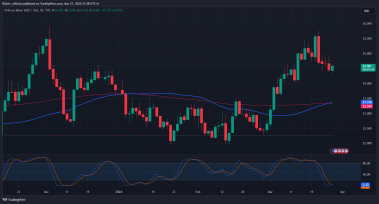According to a closely monitored business survey released Monday, the U.S. manufacturing sector continued to shrink in March.
Manufacturing purchasing managers index data from the Institute of Supply Management showed a decline to a 21-month low of 46.3 from 47.7 in February, much below consensus expectations for a more moderate decline to 47.5. Growth and contraction are normally distinguished by an index level of 50. The ISM’s index has now been below that mark for five months after declining progressively over the previous year.
For employment, new orders, and prices paid, each of the three sub-indices in the report also came in below 50. Order backlogs and lead times also decreased, which painted a picture of a sector that is cooling quickly under the strain of the Federal Reserve’s repeated interest rate increases over the previous 12 months.
Market players gambled that the slowdown implied by the ISM figures will force an early pause in the Federal Reserve’s policy tightening cycle, which led to a spike in U.S. stock futures, a decline in the dollar, and a drop in bond yields in response to the news.
ISM chair Timothy Fiore said factories were aligning themselves for a weak first half before a possible rebound later in the year.
He noted though that there was only “mixed sentiment about the return of growth early in the second half.”
According to one response from the transportation equipment sector (which includes the auto industry), “Sales are dropping at an increasing rate, allowing us to burn through back orders at a faster-than-expected pace,” while a different statement from the machinery sector emphasised particularly weak demand from the automotive sector.
The S&P 500 futures contract was up 0.4% at its highest level since mid-February by 10:15 ET (14:15 GMT), while the dollar index, which measures a basket of currencies from major economies against the dollar, was down 0.4% at 101.775. The benchmark 2-year Treasury note’s yield momentarily dipped below 4% before rising a touch to trade at 4.03%, down 13 basis points from Friday’s finish.
The decline indirectly supports the Organization of Petroleum Exporting Countries’ unexpected decision to reduce oil supply over the weekend in response to indications of waning advanced economy demand. According to OPEC, its members will start reducing their daily output by roughly 1 million barrels in May.




 By:
By:





